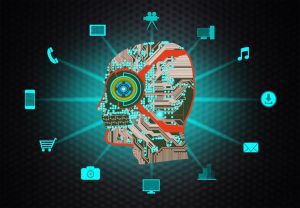This is a guest post by Josephine Perry at Makesnaps.
The role of artificial intelligence in the world of business is going to expand in the coming years. We are already starting to see the world’s largest companies making large investments in different AI technologies. With the advent of technologies like chatbot platforms and machine learning algorithms, these innovations are transforming how we do business, both as brands and customers.
Among the most significant developments in AI, you have language technologies like Natural Language Processing (NLP), Natural Language Understanding (NLU) and Natural Language Generation (NLG). Close to one in three businesses say that language technologies are the types of AI that they use most, making it the most commonly used form of AI in business today.
With some of the most important conversations about AI being focused on these technologies, here we’ve explained what they mean to the modern businesses that use them.
Artificial Intelligence
Artificial intelligence encompasses a range of technologies that make it possible for machines to simulate human intelligence. This includes analyzing and learning from data, reasoning, decision making, and self-correction.
Businesses and researchers already use AI in a number of different ways. For example, these applications include self-driving cars, analytics systems, chatbots, digital personal assistants, face recognition systems, and the AI components of computers games.
The most advanced AI systems use machine learning. Simpler forms of AI operate based on a specific set of rules. With systems that employ machine learning, the AI analyzes data and continually learns from interactions. This allows an AI system to improve with experience. Companies like Netflix and Pinterest, for example, leverage machine learning to provide better recommendations and content for users.
Predictive analytics is one way in which marketers use machine learning to make better decisions. Essentially, the system analyzes data concerning consumer behaviour, and marketers can then use these insights to develop better content or refine their strategies for connecting with customers.
Natural Language Processing
Natural Language Processing involves technologies that make it possible for machines to understand and generate natural human language. This would include both text and speech, and it is the technology that makes it possible for humans to have natural conversations with machines.
In essence, what an NLP system does is take the input from a human, analyze the text or speech to find the meaning, determine the correct response to the question or command, and then provide a reply in the natural language of the human. This is the technology behind the chatbots you may encounter online and digital personal assistants, like Amazon’s Alexa.
Natural Language Understanding
Natural Language Understanding is a subset of Natural Language Processing. NLU technologies provide AI systems with the ability understand natural language. This is an especially difficult task for a machine because it requires the understanding of unstructured inputs.
Humans effortlessly understand language even with mispronunciations, colloquialisms, swapped words, and contractions. However, machines have a harder time making sense of these unpredictable inputs. The intention of NLU is to receive the input from the human and correctly decipher the meaning behind natural speech.
Natural Language Generation
Natural Language Generation is another subfield within Natural Language Processing. NLG takes the findings from analyzed data and determines the best way to put the findings into natural language that can be understood by humans. As an example, a system could analyze millions of consumer interactions to come to conclusions. Then the machine could use NLG to translate those conclusions into the preferred language of the user.
Artificial intelligence technologies already play a vital role for many businesses. Machine learning can provide insights into customer behaviours and language technologies help businesses to understand what their customers are saying through a broad range of interactions.
Even though still in the early stages, businesses are starting to see great results from technologies like NLP, NLU, and NLG. As these technologies develop, these systems will become more effective, and their insights will be available to a growing number of businesses.


Leave a Reply